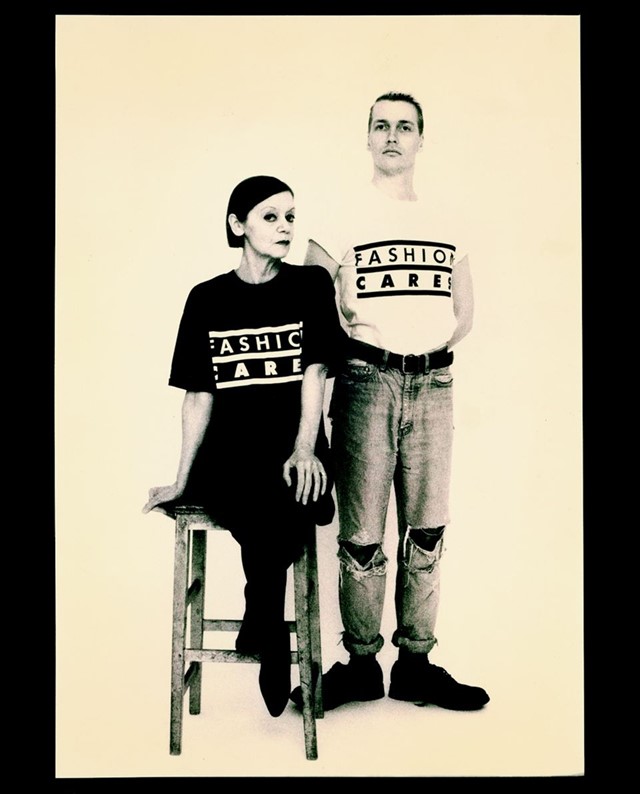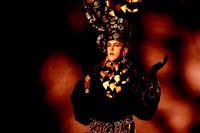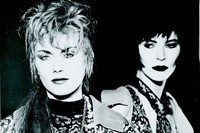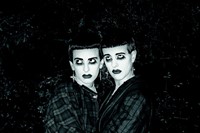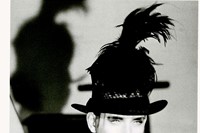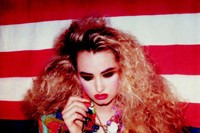We take a look at a new book, BLITZ - Fashioning the '80s.
Along with i-D and The Face, BLITZ was one of three magazines that shaped a new aesthetic coming out of post-punk, 1980s Britain. Making bold statements while covering everything from fashion, music, film, and pop culture – plus anything else that was causing a sensation – BLITZ was provocative and intelligent, gleefully mixing high and low culture as an alternative to the staid press of the day. A new book, BLITZ – Fashioning the ‘80s, looks at 100 of the fashion stories that first appeared in the pages of this influential monthly, curated by their former fashion editor, Iain R. Webb.
“There was a genuine gap in the market for a magazine like BLITZ,” says founder Carey Labovitch in the book’s introduction. Labovitch, who started BLITZ after a conversation at a party with the other founder, Simon Tesler, was still in university at the time. “I was nineteen and found myself desperate to create… a magazine I wanted to read that covered all the areas that my generation was interested in… In those days, teenagers were limited by such narrow choices: music newspapers such as NME, or girls’ magazine such as Jackie. There just had to be more to life than this!”
Iain R. Webb, who is a an award-winning writer and professor of Fashion at the Royal College of Art and Central Saint Martins, has collected classic spreads, as well as unseen archive content, original interviews, and the memories of those involved in putting these iconic fashion stories together – from photographers and models, to PRs and hairdressers.
Included in the retelling of BLITZ’s history are Boy George, Nick Knight, David LaChapelle, Comme Des Garçons, John Galliano, Jean Paul Gaultier, Katharine Hamnett, Hermès, Pam Hogg, Issey Miyake, Vivienne Westwood, plus the figures behind controversial spreads such as Barmitzvah Boy, featuring a ginger-haired toddler in Bodymap clothes, with curled locks furling out of either side of a yarmulke. “Would we get away with it now?” – is a question that is posed regularly throughout the book.
'“Would we get away with it now?” – is a question that is posed regularly throughout the book.'
Not just transforming the idea of beauty and style, BLITZ also represented a new breed of cultural entrepreneurs who wanted to make their mark, and whose legacy is still felt today. “Young people like us were turning their hobbies or interests – such as photography or writing or styling or performance art – into professions because they just couldn’t get jobs,” says Labovitch, “and BLITZ aimed to provide just that platform for young creative talent. The music and fashion scenes of the seventies were giving way to a more serious and ambitious generation of the eighties.”
In the early 1990s the recession hit hard and, unlike many of its competitors, BLITZ had decided to stay independent, so did not have the financial backing to keep them afloat when the advertising money ran out. “We consciously chose not to ‘sell out’,” says Tesler. “[We] rejected big financial offers from major publishing houses, and in hindsight perhaps we should have followed suit. Regrets? We have a few…but at least – and with apologies to Frank Sinatra and Sid Vicious – “more, much more than this… we did it our way.”
BLITZ: As see in BLITZ – Fashioning ‘80s Style is available now from ACC Editions.
Text by Ananda Pellerin
Ananda Pellerin is a London-based writer and regular contributor to anothermag.com.
